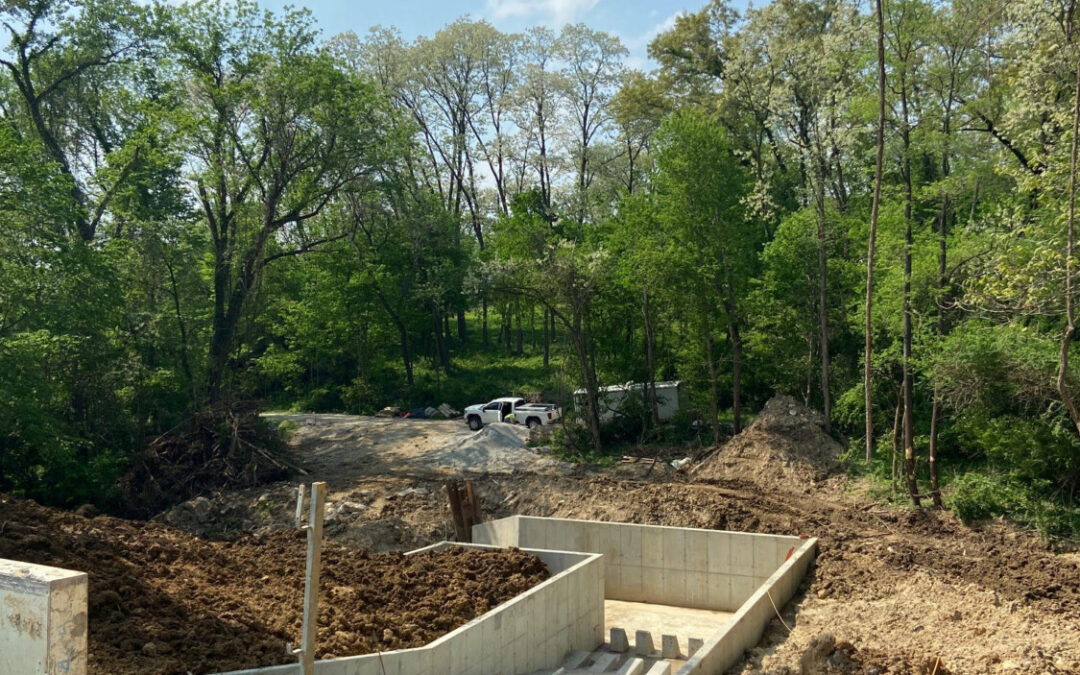‘Normal Pool’ of the lake
While we are all celebrating the return to a normal pool for our beloved Dunlap Lake, there has been much conversation on social media about what is considered a “normal pool” and how this relates to the newly completed spillway. Here are a few facts about the lake, the dam, the overflow silo, and the new spillway:
The previous spillway was an emergency overflow and was 511’ above sea level. The means for controlling the normal pool level of 510’ above sea level was by using the silo (the structure by the dam with the big wheel on it). The top of the silo was set at 510’, so any lake level over 510’ would spill into and out the bottom of the silo onto the other side of the dam. Historically the silo could keep up with the normal rain events and the emergency overflow would only see water under extreme storms or extended flood events.
Several years ago, after Hurricane Ike, all of the inflows to the lake expanded significantly, with the biggest being 72’ wide at the bridge near Gerber Road (double what it used to be). IDNR representatives pointed out that the silo could no longer keep up with the new volume, and the emergency overflow became activated much more often than before.
The last several years have put the silo in constant drain mode, by the time the lake got to or close to the normal pool of 510’ another rain event would push it right back up (sometimes with fluctuations of 3-4’ at a time. This puts an enormous strain on the silo, the dam, and what was our old emergency overflow.
The overflow was only 35’ wide and was routinely damaged with water shooting out of its walls. Our new spillway was built at a 510’ normal pool with a drop weir 35’ x 20’ x 35’. Water flows over 3 sides now making it a 90’ opening to get the water out without having the damaging fluctuations that we did in the past and allowing us to maintain the 510’ normal pool.
As a board, one of our highest priorities, if not the highest priority, is maintaining the health of our lake. Without rebuilding this crucial infrastructure we as an association risked losing our most valuable asset, our beautiful lake. As we now move onto future projects on the south end, we can all rest assured that the water level control measures at the north end of the lake are in great shape and performing exactly how the dam was originally designed.
